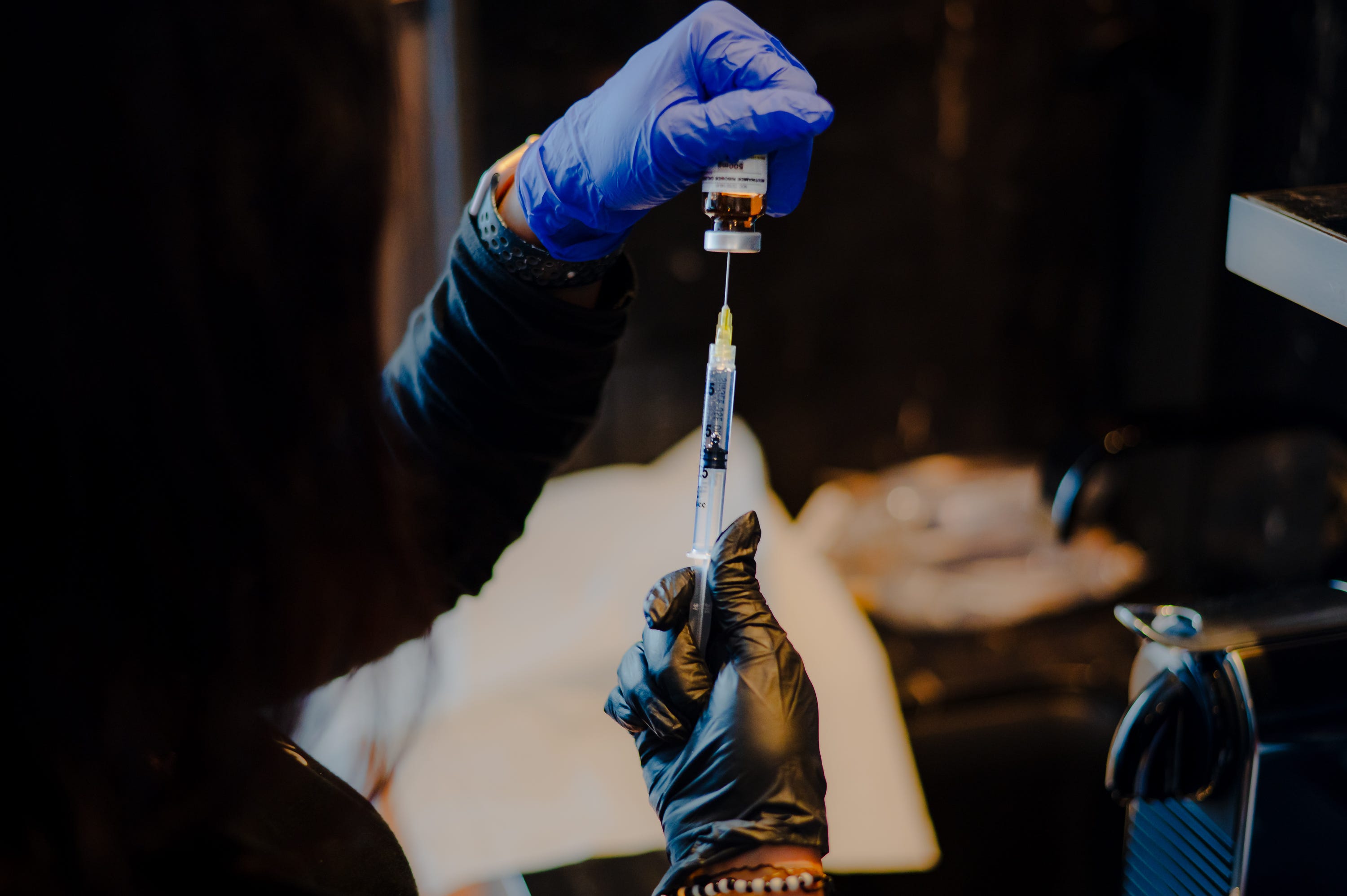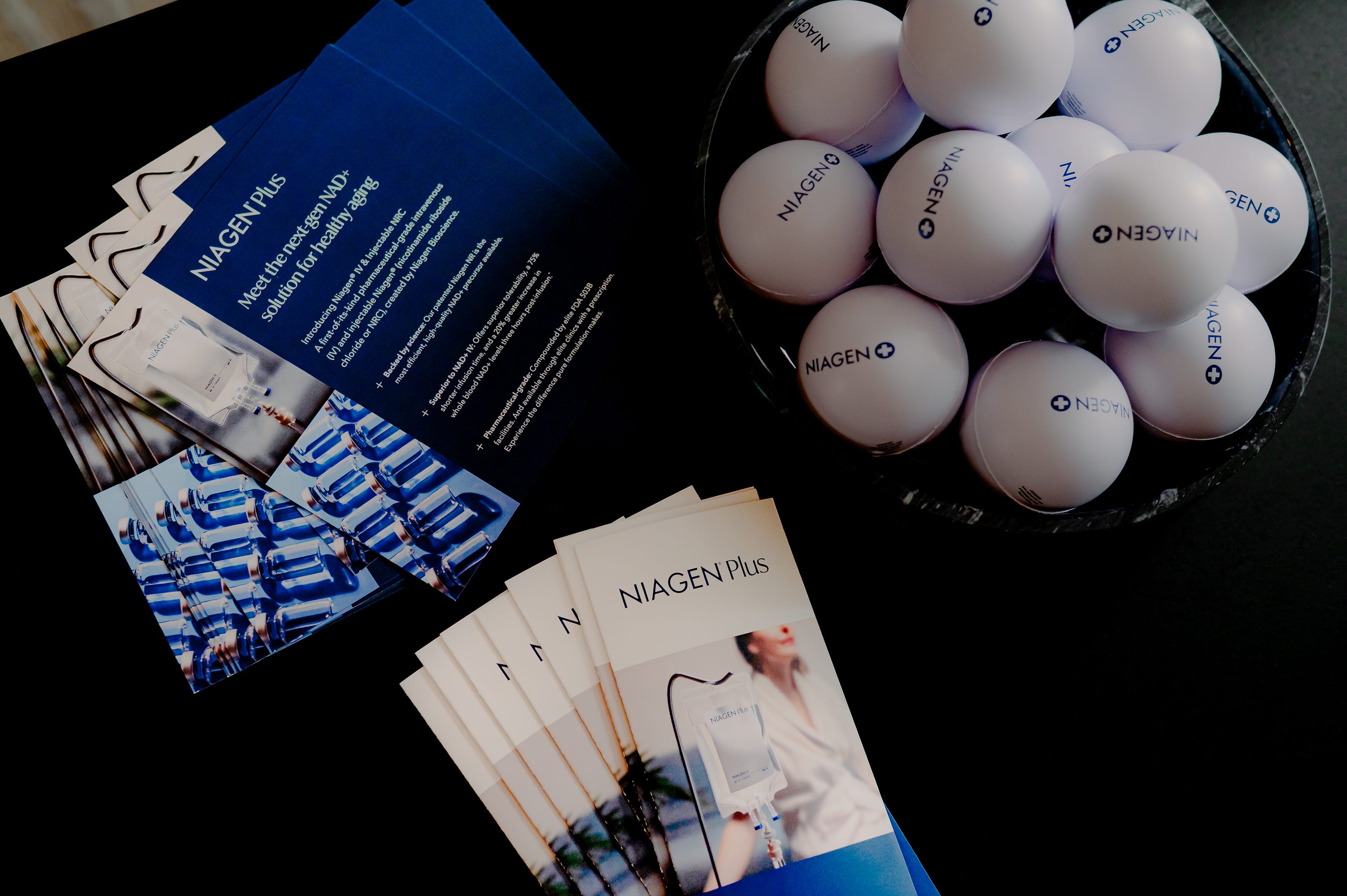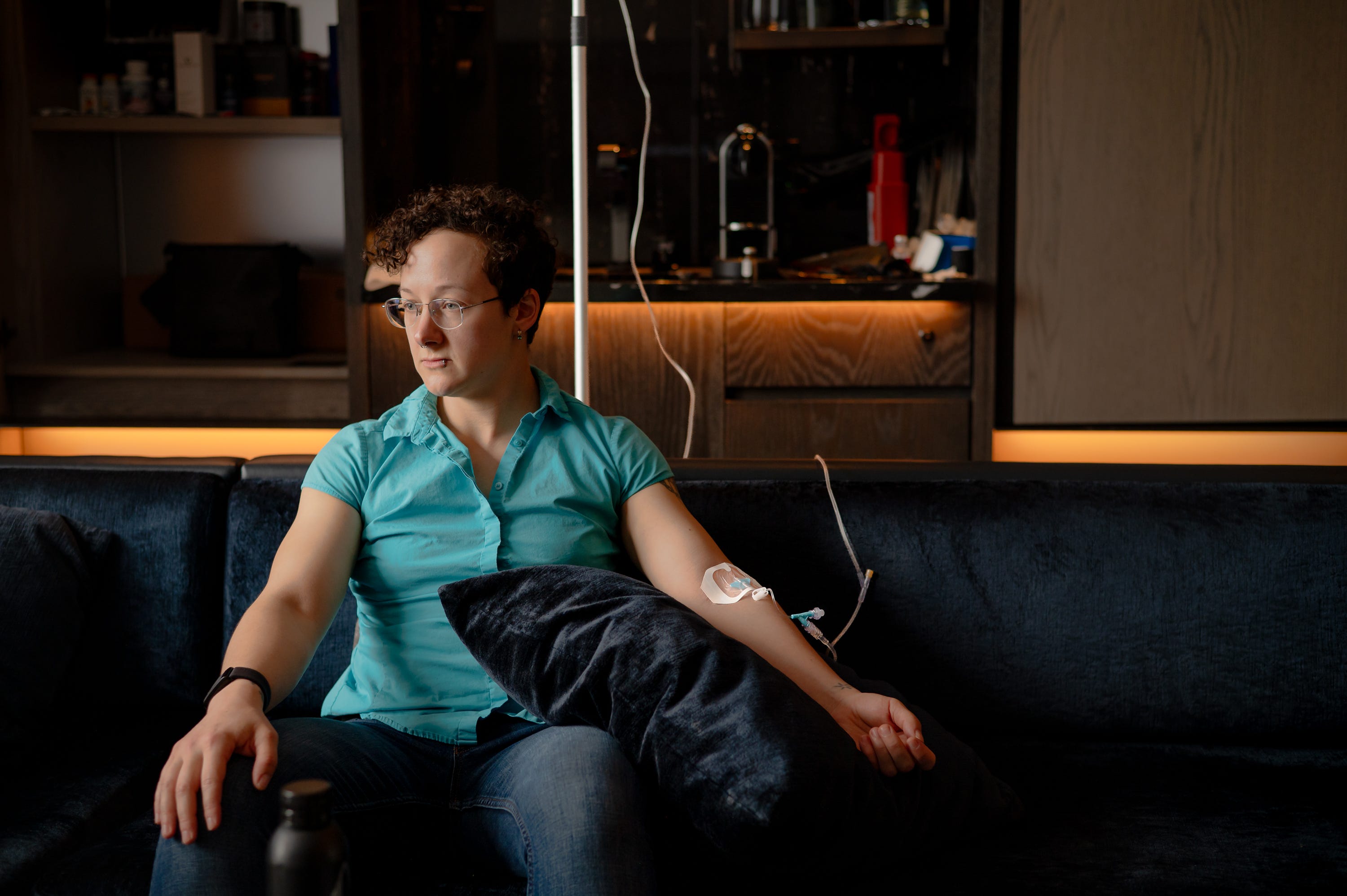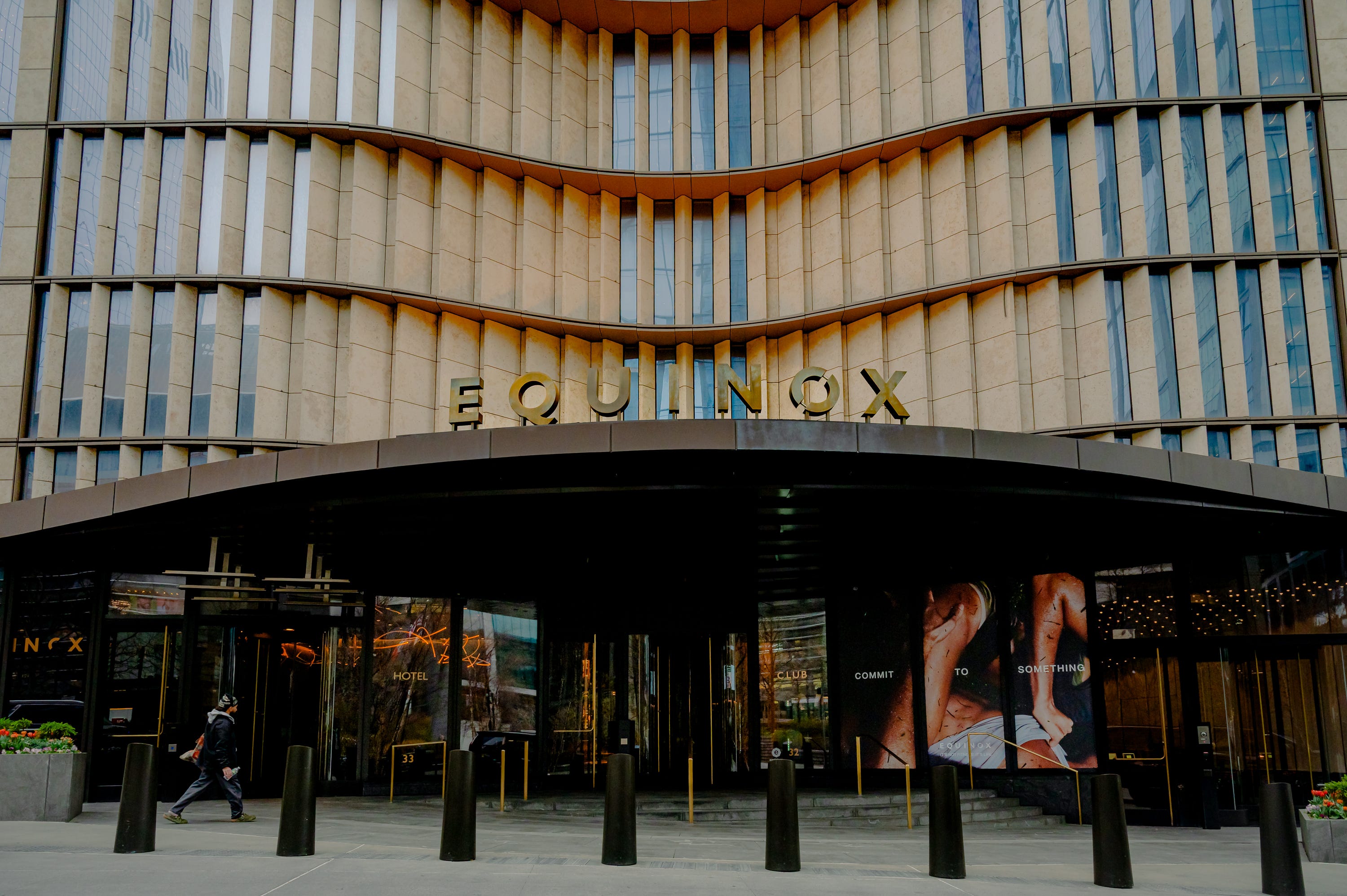
Momo Takahashi for BI
These days, there is one wellness hack on the lips of celebrities, athletes, and high-flyers: NAD. It’s the pep-up du jour.
NAD is short for nicotinamide adenine dinucleotide, a molecule that’s crucial for healthy cells and plays an essential role in metabolism and providing energy for the body.
We need adequate levels of NAD to stay alive, and our bodies naturally produce it. However, we make less of it as we get older (some studies suggest the decline starts in our mid-40s), which can slow down our cells’ ability to repair and regenerate.
NAD isn’t new. The molecule was discovered more than 100 years ago, and scientists have been exploring the longevity potential for over two decades. But recent advances in biotech have brought previously fringe wellness practices to the mainstream. Consider the booming popularity of GLP-1 drugs like Ozempic, which were once seen as experimental peptides. NAD is next.
The new market of NAD+ infusions — promising to rejuvenate your energy, appearance, and immune system — has legions of celebrity fans: Hailey Bieber, Kendall Jenner, Gwyneth Paltrow, Jennifer Aniston, Gabby Windey, Joe Rogan, and biohackers Ben Greenfield and Dave Asprey, among others.
“It’s a longevity hack to the max,” NBA All-Star Kevin Love told me recently. “I really felt it cognitively, I was thriving after doing the IV drips several days in a row.”
Love, who at 36 is reaching the twilight of his career, said he re-ups every month or so to keep his NAD levels high. “I really will be doing that forever,” he said.
This infusion is now becoming more accessible, with med spas and established supplement brands offering a growing range of options, from luxury treatments to quick pick-me-ups.
So I decided to try it for myself.
What to expect

Momo Takahashi for BI
My infusion adventure is courtesy of Niagen Biosciences, a research company helmed by Hollywood producer Rob Fried that is angling to become a major player in NAD.
The company, which went all-in buying exclusive rights to several NAD innovations in 2012, is now rolling out various kinds of NAD boosters with their patented form of the supplement.
Within minutes of getting to an exclusive suite in the Hudson Yards Equinox hotel in Midtown Manhattan, I’m hooked up to a pharmaceutical-grade IV casually infusing my veins with one of the one of the hottest longevity supplements on the market. The treatment, which was not in clinics when Niagen first said we could try it for free, now costs between $799 (for a 125 mg dose, which I got) and $1,500 (for a 500 mg dose).
I’m not nervous, per se, but I’m trying to stay aware of any sensations. I’ve heard I might experience headaches, dizziness, cramps, tightness in the chest, or digestive issues — possible inflammation responses as the body processes the infusion.
At first I don’t feel much… of anything. I’m in and out in around 45 minutes, the majority of which is spent lounging comfortably on a couch with a gorgeous view of the Hudson River.
I’m in my 30s and healthy, so my cells are still doing their job pretty well. Sure, the vibes are great, but is anything actually happening?
I asked Charles Brenner, a leading longevity researcher and chief scientific officer for Niagen Biosciences.
He said research shows NAD infusions can benefit already-healthy people — speeding up healing (both for muscle recovery and injury repair), better resilience, even healthier skin and hair. Anecdotally, he said people who supplement NAD have fewer colds, bounce back quicker from illness or injury, and notice their hair and nails growing more quickly.
Hence the demand from people who need to perform, from professional athletes recovering from hard training to busy travelers fighting jet lag.
“Boosting and replenishing the NAD system allows those repair and anti-inflammatory processes to work as though you were a newborn baby with almost unlimited repair capacity,” Brenner said.

Momo Takahashi for BI
What Brenner is really excited about, though, are the potential long-term impacts. Studies suggest topping up your NAD level may help improve your heart health and liver health, support metabolism, and protect the brain from aging.
Research shows NAD is a promising treatment for Parkinson’s disease, Brenner said. Small studies suggest increasing NAD in the brain has potential to reduce symptoms of Parkinson’s like tremors, cognitive impairment, and pain. More trials are underway.
Not all NAD boosters are created equal
One unusual feature of NAD is that you can’t increase your levels directly by taking that molecule, because it’s too big to be absorbed directly.
NAD supplements and powders typically contain precursors that convert into it: NMN (nicotinamide mononucleotide) or NR (nicotinamide riboside).
My infusion is a specific form of NR patented by Niagen Biosciences. (Brenner is one of the leading researchers on NR, showing it can safely and effectively boost NAD levels.)
The dose I’m getting is pharmaceutical grade from FDA-registered facilities, and its purity and potency are tested by third-party labs.
Like much of the poorly-regulated supplement market, some NAD products contain fillers, ingredients or doses that differ from the label and aren’t evidence-based.
For my infusion, I get cleared by a nurse via a quick telehealth check-in to make sure that it’s OK for me to do so. The supplements are considered safe in otherwise healthy adults.
Anyone with a pre-existing conditions (like kidney issues, allergies, pregnancy) should consult their doctor before getting an NAD infusion because of a lack of data. Some evidence suggests NAD can supplements can interact with insulin, so people with diabetes may need to adjust their dose.
NAD gave me a boost — I get why athletes love it

Momo Takahashi for BI
As I walked out of Equinox into the rainy, windy spring evening, the first thing I noticed was the slight chill in the air wasn’t nearly as bothersome — because I was feeling physically warmer. A lot warmer, actually, although it wasn’t unpleasant.
It’s common for popular NAD infusions to cause an overwhelming feeling of heat and flushed skin that can be uncomfortable, according to published research and people I’ve spoken to who’ve had NAD-boosting IVs. I did feel a mild warming sensation, but no unpleasant sensations. (The Niagen IV has been linked to fewer side effects and less inflammation, according to preprint studies from the company that haven’t yet been published in peer reviewed journals).
The other noticeable change after my IV was that I felt significantly more perked up, like I’d just had a strong cup of coffee. Normally, I would be facing a 4 p.m. slump. I had felt the beginnings of brain fog prior to my session.
I get why high performers love it.
Of course, the placebo effect can play a role when you’re treating yourself to a high-end wellness experience — Brenner acknowledged that.
But a few hours after my infusion, I’d felt enough of a boost to dispel some of my natural skepticism I hold in regard to all wellness fads. It was definitely the most pleasant experience I’ve had hooked up to an IV.
NAD isn’t for everyone — at least, not yet

Momo Takahashi for BI
Right now, NAD IVs are still in the realm of luxury self-care, and a bit of a status symbol.
That’s starting to change — before the pandemic, about four clinics in the nation offered infusions, compared to hundreds of clinics today. While it used to be an hours-long process, it now takes no longer than a lunch break.
Still, the price tag remains high. Realistically, shelling out around $100s or even $1,000 a month is out of reach for most of us. (There is huge variation across clinics in terms of dosing and pricing, and no clear regulation, so the price can very a lot.)
NAD-boosting supplements are cheaper than an infusion; a 30 day supply is about $116.
If that’s outside your budget, the good news is that you can modestly boost your NAD levels by simply walking regularly, resting enough, managing your stress, and eating foods like fish, broccoli, and nuts.
That’s why, as much as I enjoyed IV-ing like the stars, I’m not in a hurry to get hooked up again. For now, I’ll keep focusing on the basics like doing plenty of exercise, eating well, and getting enough sleep.
The post I tried the longevity infusion celebrities and athletes swear by. I’m still skeptical, but I get the appeal. appeared first on Business Insider.




